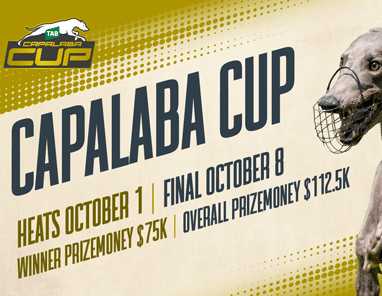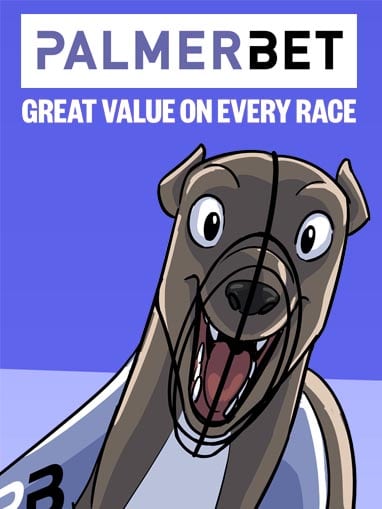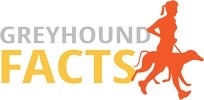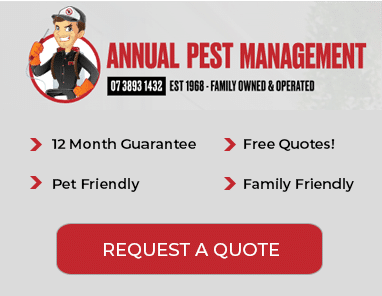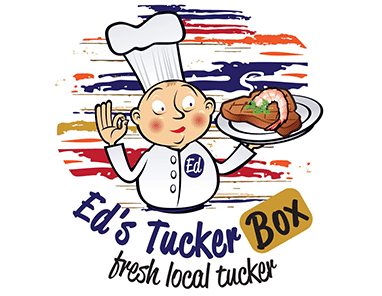
By MARK SAAL
WHEN Chase newspaper rang and asked me to write this article about getting into greyhounds, my first thought was that they had come to exactly the right person.
That’s because my latest stint as a trainer is actually the third time I have made a comeback.
And, each time I have regretted having sold up and gotten out in the past. Wow! Try buying collars, leads, beds, rugs, muzzles, vitamins etc let alone kennels, vans, or trailers, and then arming yourself with a dog or three or four.
It is an expensive exercise these days.
Get a couple of winners and the cost factor is immediately forgotten.
In my three stints in the dogs, I have always liked a punt, but if there is one bit of advice I can give prospective newcomers to this industry … don’t punt on the quality of dog you are chasing.
My first bit of advice for anyone thinking of coming into greyhound racing as a hands-on trainer is to buy a very well-bred pup. Start off with a good quality pup.
And, by that I mean look for a pup by a proven sire and ideally a proven broodbitch. OK, you will pay about 40 or even 50 percent extra for a pup of that quality, but it will be money best spent.
There are plenty out there for sale.
If you skimp at this stage of your entry into greyhounds, then that could be your biggest mistake.
Paying $2000 for a pup, or upping that to $5000 or even more, immediately gives you a 60 or more percent better chance of success.
These days, during my current return to the dogs, I am not training for anyone but myself. But in the past I have always advised my owners to be prepared to have some fun, but also be prepared to lose some money.
There are no guarantees in racing, in any of the three codes, but it has always been my aim to put the odds in my favour and by paying more for well-bred pups, that is the target.
As I wrote before, I am a punter and I do my homework on the form.
Greyhound racing is going through another surge in popularity, especially punting.
During the recent Covid scare, punters have been piling onto betting on the dogs as never before. The fact there has been no other sport for them to bet on has seen many come over to the dogs.
In the past Albion Park on a Thursday night was turning over about $3 million a meeting. Ipswich was $2 million. Those figures during Covid have grown to $5.5 million at Albion Park.
Despite governments trying to close us down in the past, greyhound racing is back and in a big way.
There has been no better time to get into the industry. Look at the prizemoney available … even for country and low-grade dogs.
Despite that, during my latest stint into the industry I have noticed not as many new faces as I thought I would have seen.
But, there is a genuine drift away from the really big kennels … the days when Tony Zammit and his brother, my great mate Mick, had really big kennels.
There are some with 30 and 40 dogs in work, but many more who are now happy to run with four to six dogs.
My advice for newcomers who want to own dogs is to buy quality bred pups.
But, if it is your aim to train yourself, then the ideal starting point could be a tried dog to learn on. And there is much to learn.
When Chase asked me to write this article, I went back over a few previous articles and saw the advice most had given about picking the brains of those already in the industry.
I have to agree totally, but the advice should ALWAYS have been to only talk to those, ask those who are winning races. Listen to those who are getting consistent results.
They know what they are doing.
But, you cannot listen to enough people.
While there are many and varied training methods, I am firm in the belief straight track training gets the very best results. I’m not a believer in competition runs, but can understand how those trainers in the south with great numbers of dogs need to utilise this method.
The great trainer Reg Kay once told me he always galloped his dogs between races up a straight behind a drag lure. He also said he always galloped two dogs together, AND each time they came out of the starting boxes on his straight track.
Feeding these days is much changed since the days I first got into the industry.
I feed beef and a very good kibble, vitamin E, electrolytes, eggs and cod liver oil. The kibble is Holistic lamb and rice produced on the Sunshine Coast by Next generation Pet Foods.
I have found it fabulous and my dogs’ coats all look super. I’ve put a few other trainers onto it and they rave about the results.
I was asked about things some trainers do wrong.
I believe this to be concentrating on short course racing. The real money in this industry is to be made from dogs that run 500 metres or further.
I do a lot of form, watch a lot of replays. I see many dogs, for instance, that run 431m at Ipswich that would be ideally suited to 500 metre racing.
Often those dogs will be stepped up once to 500m, but after an ordinary run, the trainers panic and immediately drop them back to 431m where the result of the race is determined generally by good luck and bad boxes.
Patience is everything in greyhound racing.
These trainers should prepare a dog for 520m racing with a few post to post slips after a 431m campaign. They don’t.
It’s all basic stuff.
Get your dogs checked out regularly. Most don’t.
Learn to know instinctively how well your dog is.
Those who do it right, get the results.



